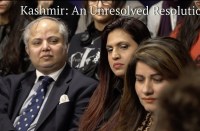In an historic move to literally accelerate the path of inter-Korean connectivity, ministers from Pyongyang and Seoul agreed to begin work on re-connecting roads and railways that have long been severed which will ultimately connect Seoul directly with Pyongyang as well as other outlying cities. Implicit in the new plan is also the modernisation of DPRK rail specifications on the new routes linking the two Korean states.
The deal was finalised when the DPRK’s Chairman of the Committee for Peaceful Reunification Ri Son-gwon meet with South Korea’s Unification Minister Cho Myoung-gyon in the peace village of Panmunjom where earlier this year South Korean President Moon Jae-in and DPRK Chairman Kim Jong-in meet for the first time.
According to the agreement, work is set to commence on the inter-connected rail and road links as soon as November of this year. The rapidity with which both sides have agreed to commence work on physically re-connecting the divided Korean peninsula demonstrates a mutual impetus for peace from both Pyongyang and Seoul. At the very minimum, this should quash rumours that the DPRK is somehow suspicious of embracing a common people in the South while equally this development indicates that South Korea’s current leadership has fully embraced the peace process without reservation.
This reality makes it clear that while Seoul remains close to the US as it has been since the creation of a separate South Korean state in 1948, under President Moon Jae-in, South Korea is embracing a very different dimension of the peace process than the more reluctant United States. In this sense, by seeking human and economic connectivity with the DPRK at the present stage of the peace process, Seoul’s position is increasingly similar to proposals formally made by both China and Russia to the United Nations. The Sino-Russian proposals call for a relaxing of UN mandated sanctions against the DPRK at the present time, thus offering an alternative to the US position that international sanctions should only be lifted once the current de-nuclearisation process is already complete, as opposed to when the process is underway as it has been for months.
While it could be inferred that South Korea’s calls to lift sanctions are indicative of Seoul’s undeniably expanding relations with both China and Russia, the reality is that as Asian countries that all border the DPRK, South Korea, China and Russia all have a clear understanding of the need for the peace process to be Asian authored, owned and executed in order for the prevailing peace to reflect the harmonious desires of regional partners with a physical stake in assuring long term peace and prosperity in north east Asia.
Although moderating sanctions on the DPRK was initially proposed by the Chinese and Russian superpowers, South Korean President Moon Jae-in has always been an indispensable part of the current Korean peace process. Recent events only serve to bolster this reality. Long before DPRK leader Kim Jong-un delivered his 2018 New Year’s message in which he called for peace, dialogue and reconciliation with Seoul, Moon Jae-in was a man inclined towards dialogue, peace and moderation.
Had Moon’s ultra-militant predecessor Park Geun-hye not been impeached and imprisoned for her corrupt activities while in office, it remains unlikely that Kim Jong-un would have ever extended an olive branch to South Korea. Park Geun-hye was not only the son of a far-right Korean leader Park Chung-hee but she embodied much of his policies which revolved around unilateral hostility to fellow Koreans in the North while also cultivating a slavish relation with Washington.
When it was later revealed that Park Chung-hee had seriously considered an attempt to assassinate Kim Jong-un, many felt that North-South relations would have been set back for decades. But when Moon Jae-in took office after winning a special election in May of 2017, after it was proved that Park worked with the intelligence services to meddle in the 2012 election which cost Moon South Korea’s top job at the time, a sense of political vindication was palpable although the austere demeanour of Moon never allowed himself to take a proverbial victory lap.
Against this background, it cannot be underestimated that the presence of Moon in Seoul’s Blue House was a key motivating factor that inspired Kim to make his decision to call for peace just seven months after Moon took office. The strategic views of Pyongyang may well have been that Moon might represent the last best chance to permanently alter the state of inter-Korean hostility lest a more militant South Korean take charge at some future date.
Throughout the peace process, Moon has had a moderating influence on the more hawkish/anti-DPRK elements in the US White House of which there remain many. In this sense, Moon has played one of the most difficult roles in the peace process, having to be the go-between for Kim Jong-un and Donald Trump at times when mild tensions have emerged in the course of the dialogue process between Washington and Pyongyang. Moon Jae-in has also overseen an expansion of his state’s trade with Russia, while in October of last here, he made a private agreement with his Chinese partners to reduce military tensions in the region. This means that Moon is a figure able to privately coordinate peace making efforts between all three of the superpowers who each have a specific interest in Korea, in China and Russia’s case because the Korean peninsula shares a border with both.
It is against this background that one must view statements from Seoul indicating a desire to moderate international sanctions on its fellow Koreans in the North while Moon’s personal mentality and political goals also help to understand why the physical linkage between the north and south of an ethnically and historically homogeneous Korean peninsula goes beyond symbolism and will help the peace process to reunite families that have long been artificially divided as a result of geopolitical machinations in the late 1940s.
The US still carries a disproportionate amount of influence in Seoul. This is why it is all the more important for President Moon to remain calm but firm in his clear intentions to promote peace through economic and human re-connectivity throughout Korea.


